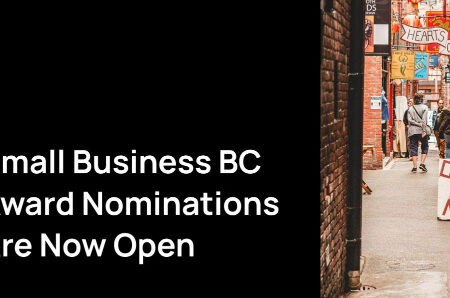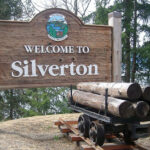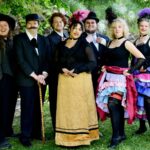LIVING HERE: More than just a pretty fascia: Why Castlegar believes community is the best foundation
The Visitors’ Centre in Castlegar, is your typical, volunteer-built building.
In the 1980s, locals came together, donating material, time and sweat to raise the chocolate-malt coloured building. And during last June’s heat dome, the space was a significant point of contact.
“That was a big deal for us to ensure we had a lot of water and supplies to keep people hydrated,” says Tammy Verigin-Burk.
Tammy is the executive director for the Castlegar and District Chamber of Commerce. Her and her team run the business network in the same building as the Visitor’s centre. But the loose or missing shingles and failing foundation have had its occupants dreaming up a new space for more than a decade.
Before Tammy’s involvement, the original concept was to build a newer version of the existing centre to house the Castlegar Chamber and the Visitor’s Centre. However, after years of consulting with businesses and the community, a need for something better surfaced.
“We don’t have a co-working space in Castlegar or RDCK Areas I and J. We also don’t have an indoor space for people to gather on a daily basis,” Tammy says. “And a safe space for people to come in out of the cold or the heat if so needed.”
A HARD WORKING HERITAGE
Although she shares his last name, Castlegar’s Tammy Verigin-Burk has no relation to Peter Verigin, the Doukhobor leader who came with thousands of his followers to the Kootenays in the early 1900s. Her family moved to the area in the ’70s.
“My dad is a civil engineer,” Tammy says. “He came here from Saskatchewan because his brothers found work, opened up Verigin Construction, and wanted an engineer involved.”
Tammy is also the youngest of four children. Her older brother works at Selkirk College; one sister works for the Kootenay Savings Credit Union, and the other works in performance management at Teck Resources.
Tammy and her siblings share DNA, but they all have something else in common. Something their parents and culture passed down.
“My parents are incredibly strong, driven individuals,” Tammy says. “From as early as I can remember, we were planting trees at the Doukhobor village or doing something to volunteer. Teaching us about work ethic and community was critically important to both.”
Tammy has been with the Chamber for nine years now. Before that, she spent 27 years working in the social services sector, mainly as a child and youth addictions worker.
Tammy created a program for street kids in Vancouver’s lower east side and founded Freedom Quest, an inclusive program for youth living in the West Kootenays whose lives have been affected by substance use or other related issues.
She gives credit to this line of work for helping her in her Chamber role.
“I often say that everyone should have a social work background to come to this job,” Tammy says. “It’s about working with people. Communication, compassion, bringing people together, and working through issues.”
NEW BUILDING BRINGS NEW OPPORTUNITIES
Tammy has brought her experience to solve a decades-old problem of a new building for the Chamber. The first option was to save the original building, but it was deemed irreparable by local engineers. Next, Tammy looked at reclaiming its materials. Then they found asbestos.
“I don’t think any person in the construction field wants to throw a bunch of stuff into the landfill,” Tammy says. “But our building was deemed unfixable, and we started looking at a new building.”
Countless community input streams, open houses, and engineering reports later ‘The Confluence’ emerged. A 7,000-square-foot building, named after the meeting of two rivers in Castlegar, would meet multiple needs while reflecting the community’s heart and vision.
“Our goal was to have this building be as green as possible, create jobs, and support local,” Tammy says. “To build a new building, we need to demonstrate that we are doing everything we can to reduce emissions and make considerations for climate change.”
GOING LOCAL AND GREEN SAVES CENTS AND MAKE SENSE
The Confluence is anything but a conventional build.
From ideas to on-the-ground construction, the Chamber will have sourced everything local that was possible.
They gave contracts to local engineers and labourers, mass timber was sourced from a local mill only a 13-minute drive away (Kalesnikoff Mass Timber), and a regional architectural company called Cover Architectural Collaborative, designed the Passive House certified building, something that excites Tammy.
“We wanted it to have 85 per cent or more reduced emissions, so it’s very exciting,” Tammy says. “It’s all about using the sunshine, shading, and ventilation instead of heating and cooling systems. It keeps the temperature at a [comfortable] level.”
When it comes to cost, the new and big build isn’t cheap and Tammy is the first to admit this.
“We started with a $900,000 building that was quite small,” Tammy says. “Now we have a 7,000-square-foot building that will cost between $5.1 and $5.6 million.”
Tammy also knows that they will recoup the money spent on the building in operating expenses. She hopes the community will embrace this and see it as making a lot of sense.
“Because of the building’s low emissions, the utility bills are so reasonable that you pay it off within a short amount of time,” Tammy says.
Building a Passive House certified building has been a learning curve for Tammy. She doesn’t have an environmental background, even if her family raised her to be conscientious about waste.
“I love to recycle and be as green as possible,” Tammy says. “My grandparents were recycling, right down to a creamo container, before the concept came out. My baba had a tiny garbage bag once a month because nothing was thrown out. Everything was homemade. It’s always been a practice for me. But I don’t understand everything.”
Yet Tammy recalls the moment when it all made sense to her.
“I sent the project budget to one of our funders. They thought that the [utility] payment was a mistake and should have been corrected for the month instead of the year,” Tammy remembers. “Typically, a 7,000 square foot building would cost about $3,800 bi-monthly to operate. We’ll be coming in at a maximum of $400 a month for electricity and heat. That really makes sense to me.”
IT TAKES A VILLAGE TO RAISE A BUILDING
Tammy would never take credit for The Confluence. She has humility and has worked hard to ensure the building is for and has heavily involved her community. Construction starts this fall and while it has taken a ton of hard work and time to get there, Tammy wouldn’t have done it any other way.
“I’ve been in the nonprofit world my whole life and know how long it takes to get things done,” Tammy says. “You need to have consistency in people working on the project, communication, and transparency. The community has been well aware of this project for a long time. The most important part is that you want to have support from the community and government.”
Both the government and the community are on board.
Almost half of the funding for The Confluence comes from provincial and federal grants, leaving the Chamber of Commerce on the hook for the remaining $2.7 million, minus a recent donation of $500,000 from the Mercer Celgar mill and $300,000 from Columbia Basin Trust.
Individuals, businesses, and organizations have and continue to make donations that Tammy will display in plaque form on a donor wall that will look like air bubbles flowing through a turbulent river. And no donation is too small.
“A friend of mine, her dad just passed away,” Tammy says. “It was really important for her to have his name on the building. I think that’s beautiful.”
Tammy suspects that the creative ideas around ‘The Confluence’ will keep flowing. She’s grateful she’s had the opportunity to lead the project. And as for her heritage? She respectfully gives it a nod for helping shape her and the way she thinks about community.
“The piece that I hold dear about being a Doukhobor is that everything is about community and mankind and this project has always [asked] ‘what can we do with a space where we can give to our community.’”


























Comments